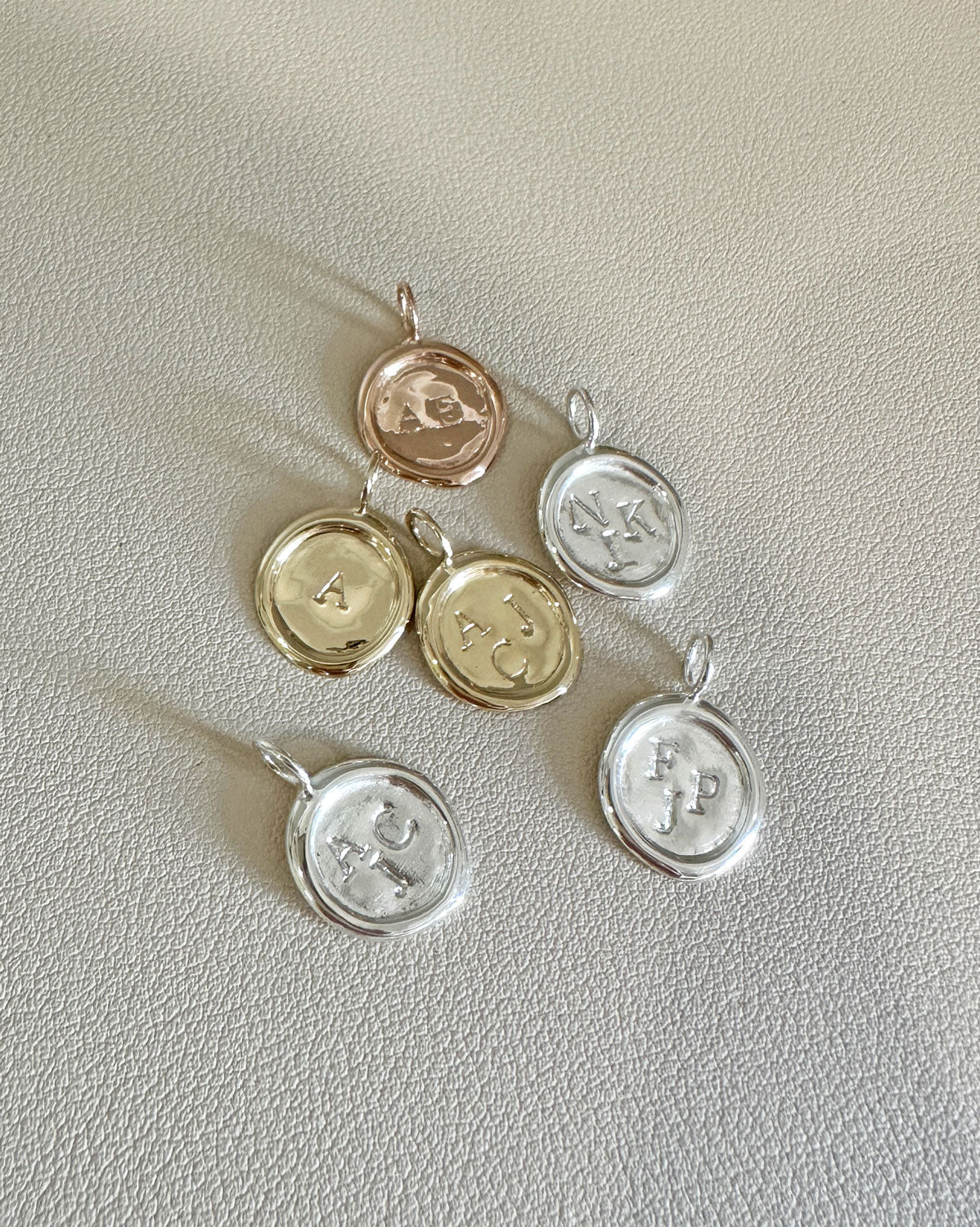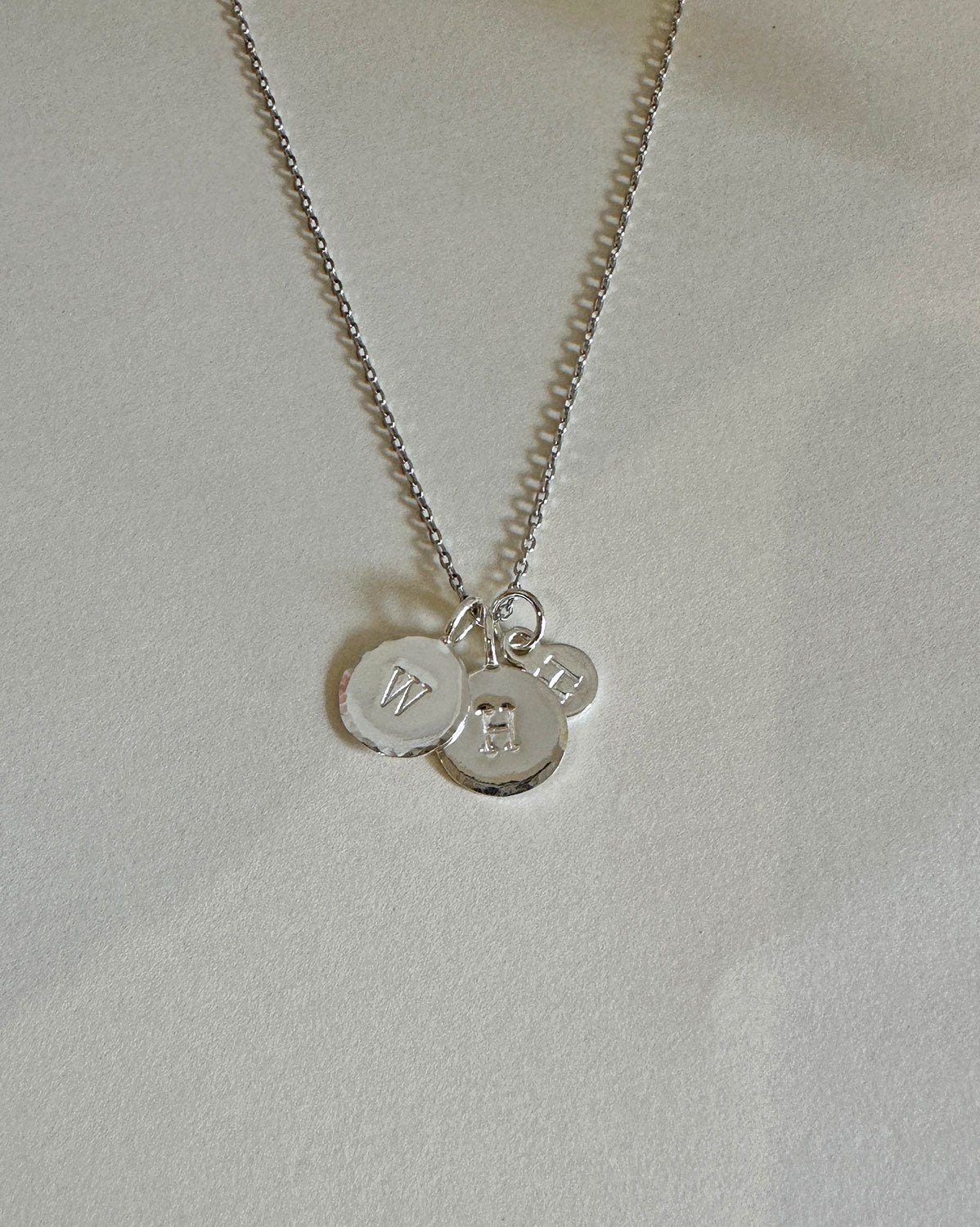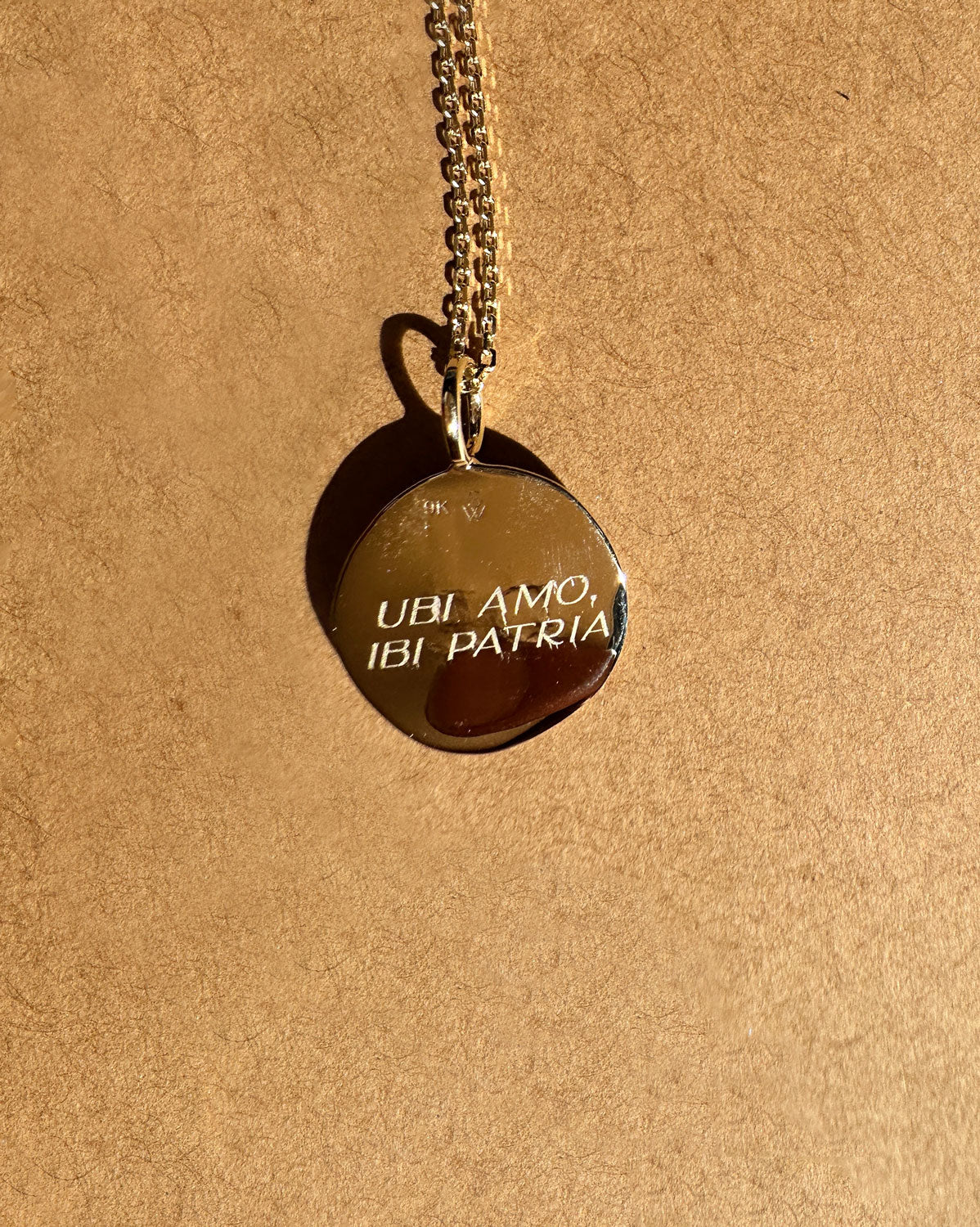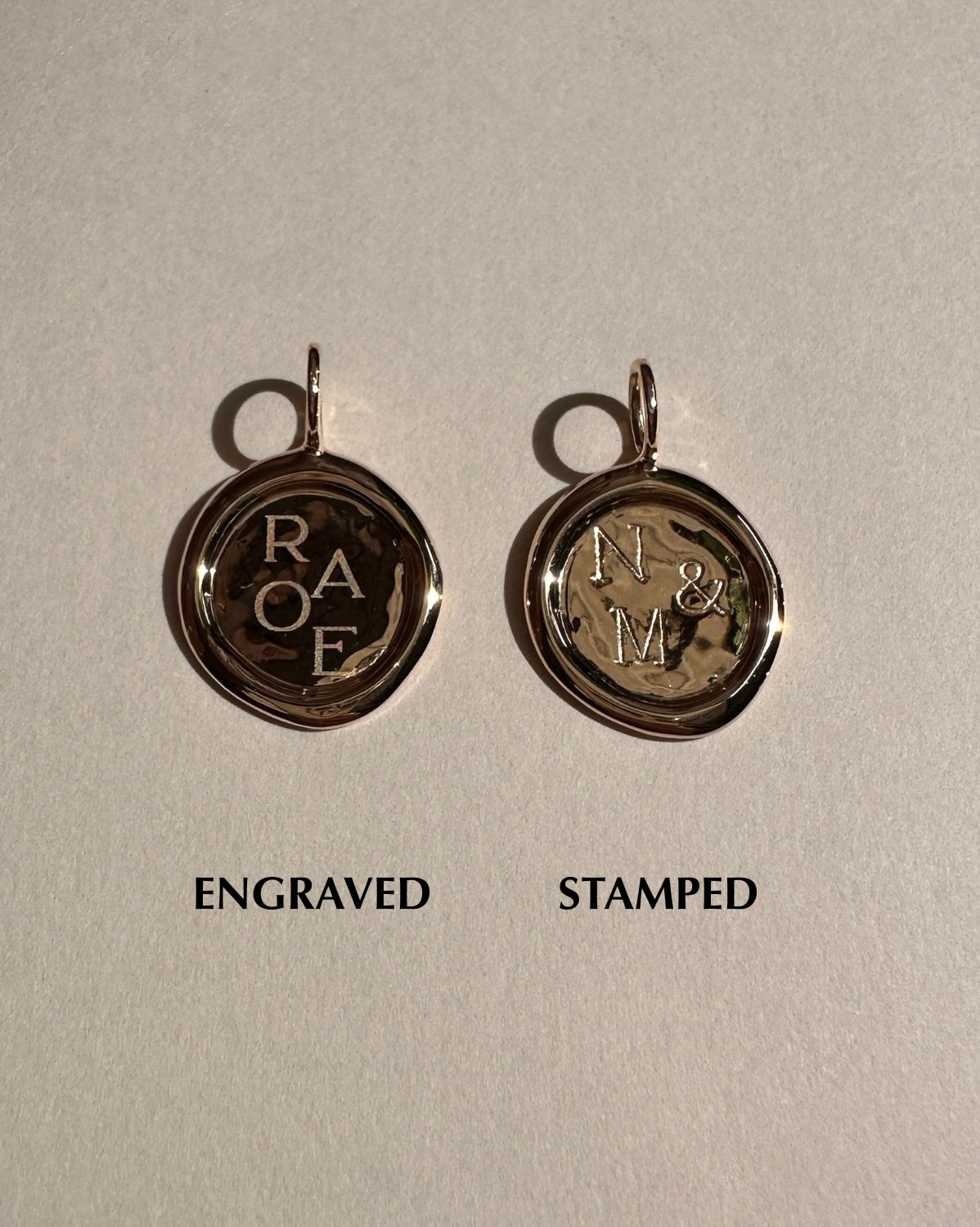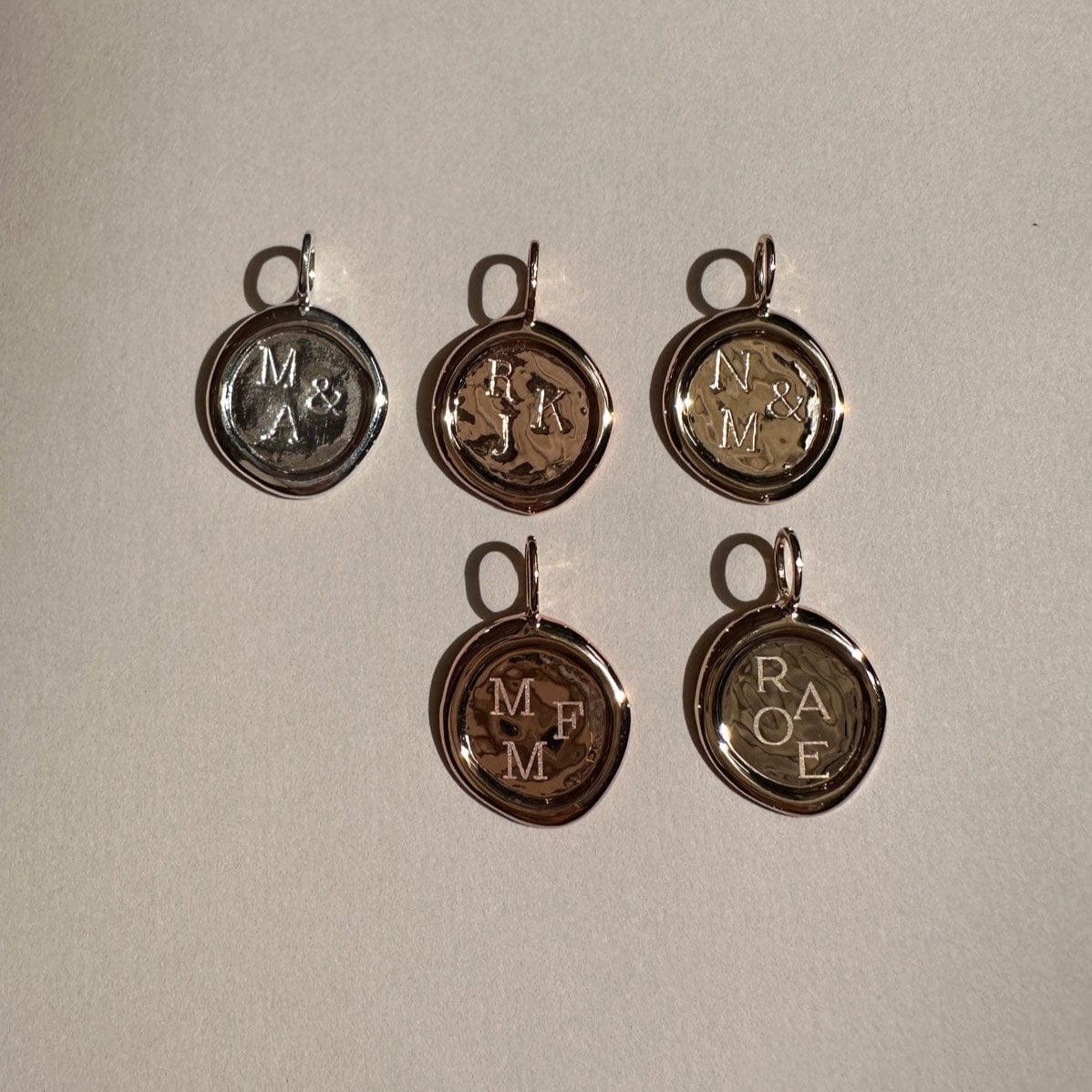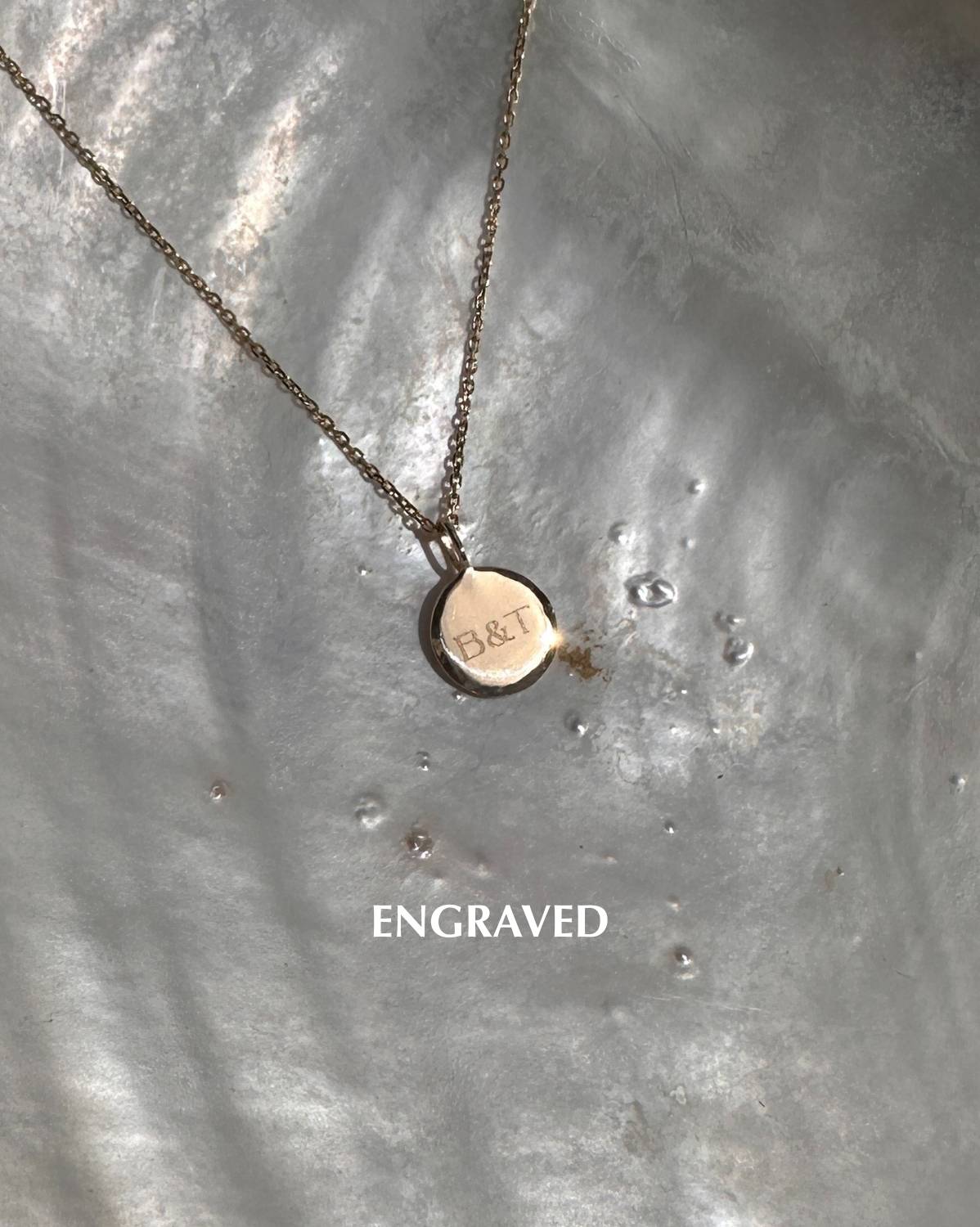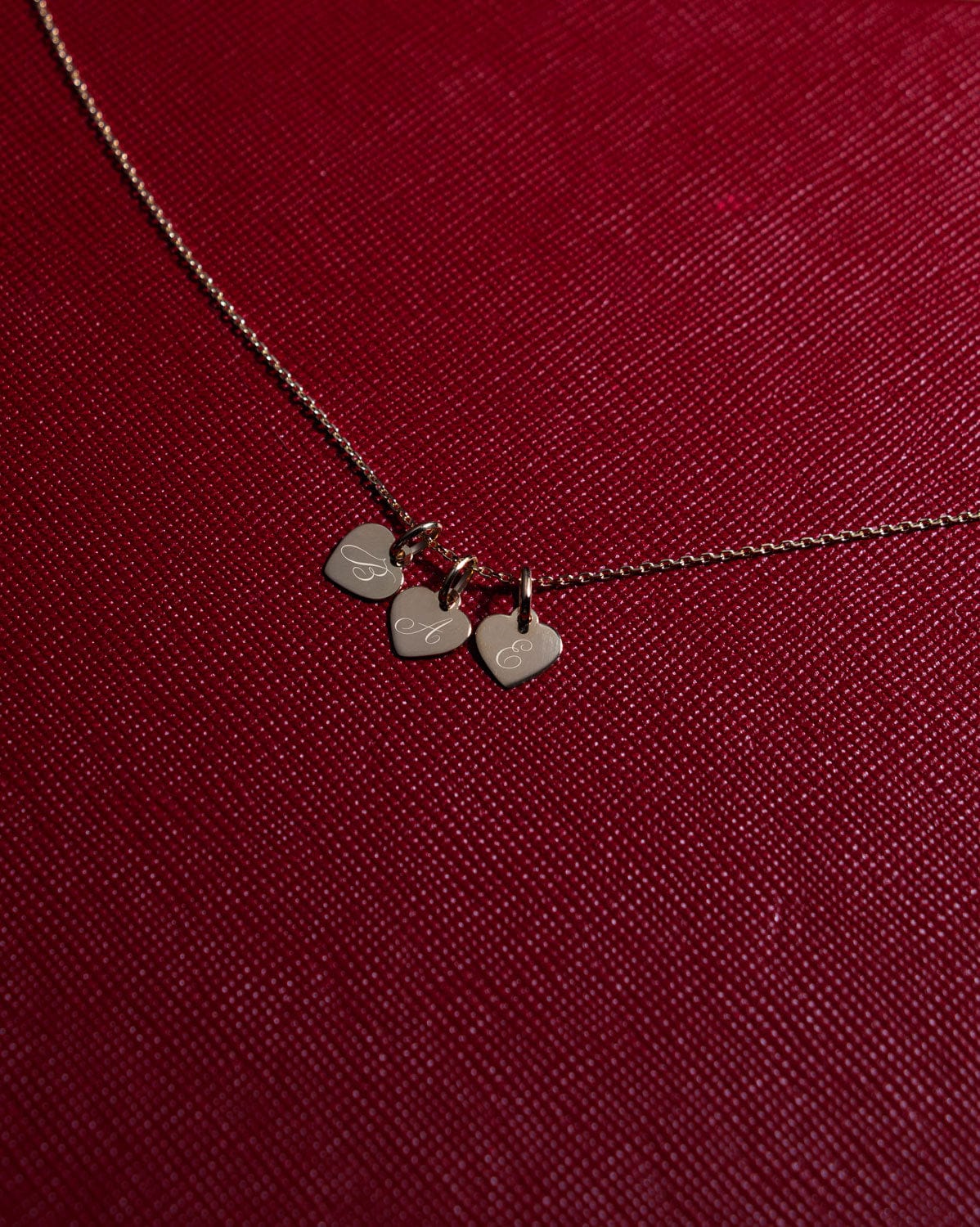There's 2 methods we can use to personalise selected pieces from our collection: Stamping or Engraving.
Both have a slightly different look and there are pros and cons to each.
"Stamping" is the original way we personalise our initial pieces.
We strike a metal stamp onto the piece of jewellery, which forces an impression onto the piece.
This method is available in our default 'typewriter' style font.
We are also able to do roman numerals and selected symbols: + - . &
The effect looks like as though the piece of jewellery has been carved into.
On some of our pieces, this may result in a slight impression on the underside of the piece.
"Stamping" is the original way we personalise our initial pieces.
We strike a metal stamp onto the piece of jewellery, which forces an impression onto the piece.
This method is available in our default 'typewriter' style font.
We are also able to do roman numerals and selected symbols: + - . &
The effect looks like as though the piece of jewellery has been carved into.
On some of our pieces, this may result in a slight impression on the underside of the piece.
"Stamping" is the original way we personalise our initial pieces.
We strike a metal stamp onto the piece of jewellery, which forces an impression onto the piece.
This method is available in our default 'typewriter' style font.
We are also able to do roman numerals and selected symbols: + - . &
The effect looks like as though the piece of jewellery has been carved into.
On some of our pieces, this may result in a slight impression on the underside of the piece.
"Stamping" is the original way we personalise our initial pieces.
We strike a metal stamp onto the piece of jewellery, which forces an impression onto the piece.
This method is available in our default 'typewriter' style font.
We are also able to do roman numerals and selected symbols: + - . &
The effect looks like as though the piece of jewellery has been carved into.
On some of our pieces, this may result in a slight impression on the underside of the piece.
"Engraving" is our newer way of personalising our pieces. This method has more flexibility for personalisation.
We use a computer to input the desired design, and a laser is used to mark the piece by burning a layer off the top.
A variety of designs, fonts and sizes can be achieved with laser engraving, allowing more options for customisation.
The effect looks smoother and less deep than the stamping method. It also doesn't leave any impressions on the underside.
"Engraving" is our newer way of personalising our pieces. This method has more flexibility for personalisation.
We use a computer to input the desired design, and a laser is used to mark the piece by burning a layer off the top.
A variety of designs, fonts and sizes can be achieved with laser engraving, allowing more options for customisation.
The effect looks smoother and less deep than the stamping method. It also doesn't leave any impressions on the underside.
"Engraving" is our newer way of personalising our pieces. This method has more flexibility for personalisation.
We use a computer to input the desired design, and a laser is used to mark the piece by burning a layer off the top.
A variety of designs, fonts and sizes can be achieved with laser engraving, allowing more options for customisation.
The effect looks smoother and less deep than the stamping method. It also doesn't leave any impressions on the underside.
"Engraving" is our newer way of personalising our pieces. This method has more flexibility for personalisation.
We use a computer to input the desired design, and a laser is used to mark the piece by burning a layer off the top.
A variety of designs, fonts and sizes can be achieved with laser engraving, allowing more options for customisation.
The effect looks smoother and less deep than the stamping method. It also doesn't leave any impressions on the underside.
Note: We can only stamp on one side as it leaves a small impression on the underside.
Note: We can only stamp on one side as it leaves a small impression on the underside.
